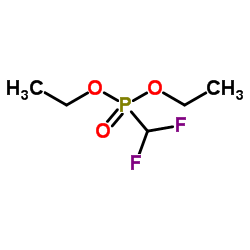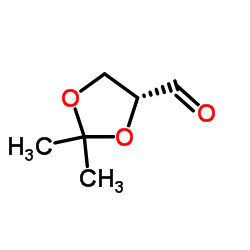13464-19-2
| Name | S-phenyl chloromethanethioate |
|---|---|
| Synonyms |
S-Phenylthiocarbonyl chloride
phenyl chlorothionoformate phenyl thiochloroformate s-phenyl carbonochloridothioate phenyl chlorothioformate (phenylsulfanyl)carbonyl chloride S-Phenyl chlorothioformate phenyl thionochloroformate Carbonochloridothioic acid,S-phenyl ester (phenylthio)carbonyl chloride Phenyl chlorothiolformate |
| Density | 1.33g/cm3 |
|---|---|
| Boiling Point | 264.9ºC at 760mmHg |
| Molecular Formula | C7H5ClOS |
| Molecular Weight | 172.63200 |
| Flash Point | 114ºC |
| Exact Mass | 171.97500 |
| PSA | 42.37000 |
| LogP | 3.13750 |
| Vapour Pressure | 0.00943mmHg at 25°C |
| Index of Refraction | 1.602 |
Synonym:Carbonochloridothioic Acid; S-Phenyl Ester Section 2 - COMPOSITION, INFORMATION ON INGREDIENTS
Risk Phrases: 34 Section 3 - HAZARDS IDENTIFICATION EMERGENCY OVERVIEW
Causes burns.Corrosive.Stench. Potential Health Effects Eye: Causes eye burns. Skin: Causes skin burns. Ingestion: May cause severe and permanent damage to the digestive tract. Causes gastrointestinal tract burns. Inhalation: Causes chemical burns to the respiratory tract. Chronic: No information found. Section 4 - FIRST AID MEASURES Eyes: Flush eyes with plenty of water for at least 15 minutes, occasionally lifting the upper and lower eyelids. Get medical aid immediately. Do NOT allow victim to rub eyes or keep eyes closed. Extensive irrigation with water is required (at least 30 minutes). Skin: Get medical aid immediately. Flush skin with plenty of water for at least 15 minutes while removing contaminated clothing and shoes. Wash clothing before reuse. Discard contaminated clothing in a manner which limits further exposure. Destroy contaminated shoes. Ingestion: Do not induce vomiting. If victim is conscious and alert, give 2-4 cupfuls of milk or water. Never give anything by mouth to an unconscious person. Get medical aid immediately. Inhalation: Get medical aid immediately. Remove from exposure and move to fresh air immediately. If breathing is difficult, give oxygen. Do NOT use mouth-to-mouth resuscitation. If breathing has ceased apply artificial respiration using oxygen and a suitable mechanical device such as a bag and a mask. Notes to Physician: Antidote: None reported. Section 5 - FIRE FIGHTING MEASURES General Information: As in any fire, wear a self-contained breathing apparatus in pressure-demand, MSHA/NIOSH (approved or equivalent), and full protective gear. During a fire, irritating and highly toxic gases may be generated by thermal decomposition or combustion. Extinguishing Media: Use agent most appropriate to extinguish fire. Section 6 - ACCIDENTAL RELEASE MEASURES General Information: Use proper personal protective equipment as indicated in Section 8. Spills/Leaks: Clean up spills immediately, observing precautions in the Protective Equipment section. Provide ventilation. Section 7 - HANDLING and STORAGE Handling: Wash thoroughly after handling. Remove contaminated clothing and wash before reuse. Do not get in eyes, on skin, or on clothing. Keep container tightly closed. Do not ingest or inhale. Use with adequate ventilation. Discard contaminated shoes. Storage: Keep container closed when not in use. Store in a cool, dry, well-ventilated area away from incompatible substances. Corrosives area. Section 8 - EXPOSURE CONTROLS, PERSONAL PROTECTION Engineering Controls: Facilities storing or utilizing this material should be equipped with an eyewash facility and a safety shower. Use adequate ventilation to keep airborne concentrations low. Exposure Limits CAS# 13464-19-2: Personal Protective Equipment Eyes: Wear appropriate protective eyeglasses or chemical safety goggles as described by OSHA's eye and face protection regulations in 29 CFR 1910.133 or European Standard EN166. Skin: Wear appropriate protective gloves to prevent skin exposure. Clothing: Wear appropriate protective clothing to prevent skin exposure. Respirators: A respiratory protection program that meets OSHA's 29 CFR 1910.134 and ANSI Z88.2 requirements or European Standard EN 149 must be followed whenever workplace conditions warrant respirator use. Section 9 - PHYSICAL AND CHEMICAL PROPERTIES Physical State: Liquid Color: clear yellow Odor: stench pH: Not available. Vapor Pressure: Not available. Viscosity: Not available. Boiling Point: 107 deg C @ 10.00mm Hg Freezing/Melting Point: Not available. Autoignition Temperature: None available. Flash Point: None available. Explosion Limits, lower: N/A Explosion Limits, upper: N/A Decomposition Temperature: Solubility in water: Specific Gravity/Density: Molecular Formula: C7H5ClOS Molecular Weight: 172.63 Section 10 - STABILITY AND REACTIVITY Chemical Stability: Stable under normal temperatures and pressures. Conditions to Avoid: Incompatible materials, strong oxidants. Incompatibilities with Other Materials: Strong oxidizing agents. Hazardous Decomposition Products: Irritating and toxic fumes and gases. Hazardous Polymerization: Has not been reported Section 11 - TOXICOLOGICAL INFORMATION RTECS#: CAS# 13464-19-2 unlisted. LD50/LC50: Not available. Carcinogenicity: Carbonochloridothioic Acid, S-Phenyl Ester - Not listed by ACGIH, IARC, or NTP. Section 12 - ECOLOGICAL INFORMATION Other No information available. Section 13 - DISPOSAL CONSIDERATIONS Dispose of in a manner consistent with federal, state, and local regulations. Section 14 - TRANSPORT INFORMATION IATA Shipping Name: CORROSIVE LIQUID, N.O.S.* Hazard Class: 8 UN Number: 1760 Packing Group: III IMO Shipping Name: CORROSIVE LIQUID, N.O.S. Hazard Class: 8 UN Number: 1760 Packing Group: III RID/ADR Shipping Name: CORROSIVE LIQUID, N.O.S. Hazard Class: 8 UN Number: 1760 Packing group: III Section 15 - REGULATORY INFORMATION European/International Regulations European Labeling in Accordance with EC Directives Hazard Symbols: C Risk Phrases: R 34 Causes burns. Safety Phrases: S 25 Avoid contact with eyes. S 28A After contact with skin, wash immediately with plenty of water. S 36/37/39 Wear suitable protective clothing, gloves and eye/face protection. WGK (Water Danger/Protection) CAS# 13464-19-2: No information available. Canada CAS# 13464-19-2 is listed on Canada's NDSL List. CAS# 13464-19-2 is not listed on Canada's Ingredient Disclosure List. US FEDERAL TSCA CAS# 13464-19-2 is listed on the TSCA inventory. SECTION 16 - ADDITIONAL INFORMATION N/A |
|
~% 
13464-19-2 |
| Literature: Araki,Y. Bulletin of the Chemical Society of Japan, 1970 , vol. 43, p. 252 - 257 |
|
~84% 
13464-19-2 |
| Literature: Luo, Shi-Peng; Guo, Lian-Dong; Gao, Long-Hui; Li, Shuang; Huang, Pei-Qiang Chemistry - A European Journal, 2013 , vol. 19, # 1 p. 87 - 91 |
|
~% 
13464-19-2 |
| Literature: Martin, Stephen F.; Wong, Yue-Ling; Wagman, Allan S. Journal of Organic Chemistry, 1994 , vol. 59, # 17 p. 4821 - 4831 |
|
~% 
13464-19-2 |
| Literature: Rivier Bulletin de la Societe Chimique de France, 1907 , vol. <4>1, p. 736 |
|
~% 
13464-19-2 |
| Literature: Rivier Bulletin de la Societe Chimique de France, 1907 , vol. <4>1, p. 736 |





